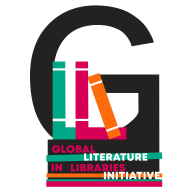
We have no idea what we don’t know about writing until we see someone doing something else with it. And it’s my great good fortune that in voyaging about among the endangered alphabets, I’ve found people doing things with writing that change the very definition of writing.
This delightful image, for example, is a detail from a nineteenth-century Javanese manuscript, Sĕrat Jaya Lengkara, currently in the British Library. You can find a blog post about it HERE. And yes, that is a mermaid. Or possibly one of the Javanese sea-goddesses, but for simplicity’s sake we’ll call it a mermaid.
Sĕrat Jaya Lengkara, like most Javanese literature, is a poem—a poem of some length and, crucially, to be performed aloud, like much of the traditional poetry of Java and Bali. And this immediately raises some questions about writing that you may not have considered—such as, what is the difference between reading and listening? Do we write differently if we anticipate a solitary reader, as opposed to a group? And how do we write differently if we expect our writing not to be printed and widely distributed, but to exist as a single copy, read aloud to a small group?
And what we learn from the mermaid is that if we’re accustomed to write for performance, we write language to some extent as we write music—that is, giving as much information and direction as possible for the performer, just like stage directions in a play….
…or like tempo notation in an extended piece of music. And in fact Javanese poetry was, and is, more like music than what we in the West generally consider writing, in that each canto or section is to be recited in its own rhythm, like movements in a sonata marked allegro or vivace.
This analogy with music is especially apt, as Javanese writing developed and incorporated characters that are more like musical notation than punctuation. And the most charming and vivid of these was the pada or canto marker.
Canto markers were small paintings inserted between one canto and the next, but they were by no means random. The larger madyapada in particular often contained a clue or phrase that indicated the meter of the next canto. Which makes a variety of kinds of sense, not least that when it comes to needing to convey information at a glance, a graphic or image is better than a written word.
I find the mermaid utterly fascinating because writing for performance, and of writing incorporating what we would call art, and the use of what we might call musical notation, all fall outside the narrow limits of what we in the West define as writing. This manuscript is a wonderful amalgam of writing (as we call it) and music and art and performance, and these elements combine effortlessly in a way that we would labor, self-consciously and uncertainly, to achieve.
Not only have we lost that manuscript tradition, we’ve lost what might be called the manuscript impulse, the urge to write something singular intended for someone specific.
We may be doing more writing than at any time in history, but it’s a very, very different kind of writing. It’s astonishing how dated it now seems that someone should sit down with a pen and paper and begin, “My son, I’m writing to you with news from home….” and have that writing reach out in such a personal and considered way. One of the most powerful ways to understand the American Civil War or the First World War is to read letters from home, or from the front, each charged with an almost unbearable tenderness or poignancy.
If anyone has the vestiges of the manuscript impulse today, it’s our youngest children, who still take a piece of paper and a crayon, perhaps, and draw a house, or two stick figures holding hands, and write “I love you, mommy” or “Hi, daddy,” writing as a manifestation of emotion, a gift.
For which the door of the refrigerator is the perfect act of publishing: it reaches its intended reader(s), it is in the kitchen, the core of the house, and we see it every time we reach for food.
Above all, this very way of writing, and of thinking about writing, is threatened—by us.
What’s more, in exporting our alphabet to the rest of the world, we are also exporting its inherent assumptions, the increasing narrowness it implies about writing, which in itself becomes a kind of cultural and linguistic imperialism that further adds to the narrowing. Many of my posts this month will be devoted, in fact, to qualities I have found in the endangered alphabets that our writing has lost, many of which therefore lie beyond our definition of writing.
The more I work on the Alphabets, the more I feel the need to broaden our understanding of writing by showing other people’s. Not only because our version limits our thinking (and writing), but because we are in the process of driving other forms of writing, and other views of what writing is and can be, out of existence.
The barbarians are at the gate, and they are us.
If you’re interested in learning more about Javanese manuscripts, Batak bark books and inscriptions on bamboo tubes, you can find an extraordinary treasure of forms of writing and insights about writing in the most beautiful book I own:
Kumar, Ann and John H. McGlynn
Published by Weatherhill Inc., New York, 1996
ISBN 13: 9780834803497

Tim Brookes is the founder and president of the non-profit Endangered Alphabets Project (endangeredalphabets.com). His new book, Writing Beyond Writing: Lessons from Endangered Alphabets, can be found at https://www.endangeredalphabets.com/writing-beyond-writing/.
